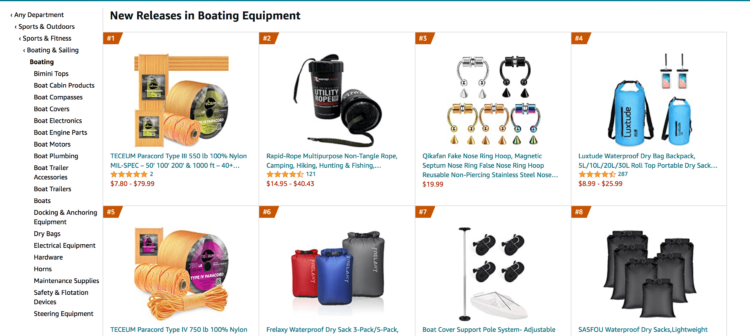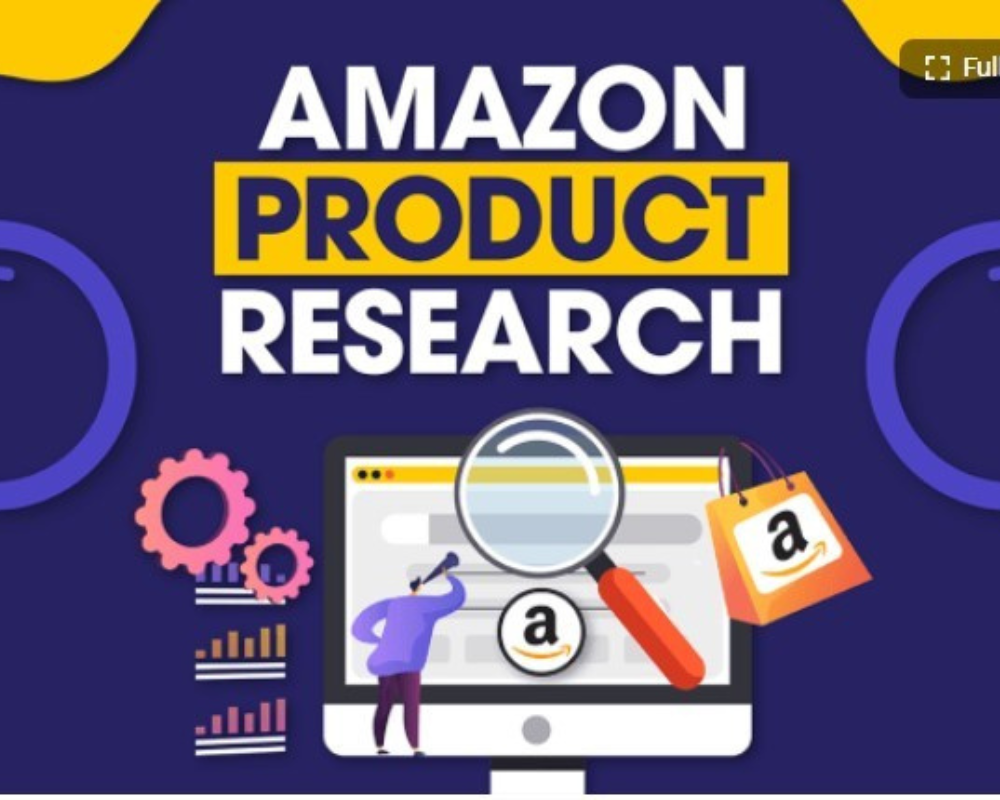Introduction
In the vast landscape of online marketplaces, Amazon stands out as a juggernaut, offering sellers unprecedented opportunities. However, with great opportunities come great challenges. Navigating the competitive terrain of Amazon requires more than just listing a product—it demands strategic and meticulous Product Research on amazon. This article delves into the pivotal role amazon product research plays in achieving success on Amazon.
Table of Contents
How to do Product Research for Amazon
For aspiring sellers venturing into the dynamic realm of Amazon, the key to success lies not just in listing products but in strategically choosing the right ones. How to do product research for amazon is the cornerstone of a thriving Amazon business, helping sellers identify lucrative opportunities, mitigate risks, and stay ahead in the competitive marketplace. In this comprehensive guide, we unravel the essential steps to conduct Amazon product research, empowering sellers with the knowledge to make informed decisions.
Understanding the Amazon Marketplace
Before delving into product research, it’s crucial to comprehend the Amazon marketplace. Recognize the categories that align with your interests, expertise, and market trends. Amazon’s diverse ecosystem encompasses various niches, each with its demand, competition, and potential for success. Tailoring your product research to align with your knowledge and preferences increases your chances of making informed decisions.
Leveraging Amazon Tools for Insightful Research
Amazon provides a range of tools to assist sellers in their product research endeavors. The Amazon Best Sellers list, for instance, showcases the top-performing products in each category, offering insights into trending items. The Amazon Keyword Tool aids in identifying relevant keywords, crucial for optimizing product listings and enhancing discoverability.
Utilize the Amazon FBA product research (Fulfillment by Amazon) calculator to estimate potential fees, evaluate profitability, and make informed pricing decisions. Additionally, consider exploring Amazon’s market research tool, Amazon Market Intelligence (AMI), for in-depth insights into product demand, competition, and sales performance.

Identifying Product Demand and Seasonality
A successful Amazon product is one that meets a demand within the market. Leverage tools like Google Trends, Jungle Scout, or Helium 10 to gauge the popularity and seasonality of potential products. Products with consistent demand throughout the year are generally more stable and provide a reliable revenue stream.
Examine the historical sales data of potential products to understand their performance over time. Evaluate how well products have sustained demand, especially during peak shopping seasons like holidays. This analysis aids in identifying products with enduring market appeal.
Analyzing Competition and Differentiation Strategies
Understanding the competitive landscape is crucial for product success on Amazon. Evaluate the number of competitors, their reviews, and pricing strategies. Products in saturated markets may require more strategic differentiation to stand out.
Consider how you can offer a unique value proposition, whether through superior quality, innovative features, or a more compelling price point. This differentiation not only attracts customers but also reduces the intensity of competition, creating a niche for your product.
Evaluating Profitability and Costs
Profitability is the lifeblood of any business, and assessing potential profits is a critical aspect of product research. Calculate the estimated costs involved, including product sourcing, shipping, Amazon fees, and marketing expenses.
Use tools like Jungle Scout’s Profitability Calculator to analyze potential profit margins. This helps in identifying products that align with your financial goals and ensure a healthy return on investment.
Gathering Customer Feedback and Reviews
Customer feedback provides invaluable insights into the strengths and weaknesses of potential products. Analyze customer reviews on similar products to understand user experiences, identify common pain points, and discover opportunities for improvement.
Consider products with a mix of positive reviews and constructive criticism. This information guides product enhancements and allows you to launch a product that meets or exceeds customer expectations.
Understanding Amazon’s Algorithm
Before delving into the nuances of Amazon product research, it’s crucial to understand Amazon’s algorithm. This intricate system determines the visibility and ranking of products. Numerous factors, including sales velocity, customer reviews, and keyword relevance, contribute to a product’s standing in search results.
Also Read: 10 Proven Marketing Strategy of Amazon to Boost Your Sales
Competitor Analysis
In a marketplace as dynamic as Amazon, understanding your competition is not just advantageous; it’s a prerequisite for success. Competitor analysis allows sellers to go beyond their own product listings and gain a comprehensive view of the entire market landscape. By studying competitor products, pricing strategies, and customer reviews, sellers can uncover opportunities for differentiation and refine their own approach to stand out in a crowded marketplace.
Identifying Market Gaps and Opportunities for Differentiation
Competitor analysis is not a mere exercise in observing rival products; it’s a strategic initiative to identify market gaps and capitalize on them. By scrutinizing competitor offerings, sellers can pinpoint areas where customer needs are not fully addressed or where competitors fall short. This presents an opportunity for sellers to tailor their products, enhance features, or adjust pricing to fill these gaps and attract a specific customer segment.
Differentiation is key in a saturated marketplace. Competitor analysis provides the insights needed to create unique selling propositions that set products apart. Whether it’s through superior quality, innovative features, or a more compelling value proposition, understanding the competitive landscape allows sellers to carve out their niche and build a distinct brand identity.

Tracking Competitor Pricing Strategies
Pricing is a critical factor in the e-commerce ecosystem, and understanding how competitors price their products is vital. Competitor analysis helps sellers benchmark their pricing against similar products in the market. This knowledge enables sellers to adjust their pricing strategies to remain competitive, whether through offering more value or strategically positioning themselves as a premium option.
Leveraging Customer Reviews for Improvement
Competitor analysis extends beyond the tangible aspects of products and pricing; it encompasses the intangible realm of customer perception. Monitoring competitor customer reviews provides valuable insights into what customers appreciate and where competitors may be falling short. Sellers can use this information to refine their own product offerings, improve customer service, and address pain points that may not be adequately met by competitors.
Strategic Positioning and Decision-Making
Armed with the insights from competitor analysis, sellers can make strategic decisions that go beyond mere reaction to market trends. Whether it’s adjusting inventory levels, fine-tuning marketing strategies, or introducing new features, the data gleaned from competitor analysis becomes a guiding compass for sellers navigating the complexities of the e-commerce landscape.
Keyword Research
Importance of Relevant Keywords
Keywords are the currency of Amazon. Integrating relevant keywords in product listings enhances visibility. Sellers should leverage tools like Google Keyword Planner and Amazon’s own tools for effective keyword research.
Tools for Effective Keyword Research
Utilizing advanced tools simplifies the process of keyword research. Tools such as Ahrefs and SEMrush provide in-depth insights into search volumes and competition, aiding sellers in crafting optimized listings.
Optimizing Product Listings
Crafting Compelling Product Titles
The product title is often the first interaction customers have with a listing. Crafting compelling and informative titles is essential for capturing attention and boosting click-through rates.
Writing Informative Product Descriptions
A well-crafted product description not only informs but also persuades. Sellers should focus on highlighting product features and benefits in a way that resonates with the target audience.
Customer Reviews and Ratings
Building a Positive Reputation
Positive reviews are social proof of a product’s quality. Sellers should actively encourage satisfied customers to leave reviews, contributing to a positive online reputation.
Addressing Negative Feedback
Negative feedback is inevitable, but how sellers respond to it can make a significant difference. Timely and professional responses demonstrate commitment to customer satisfaction.
Pricing Strategies
Competitive Pricing
Balancing competitive pricing with profitability is an art. Sellers should conduct regular market research to ensure their pricing aligns with customer expectations while maintaining a healthy margin.
Utilizing Fulfillment by Amazon (FBA)
Streamlining Shipping and Customer Service
Fulfillment by Amazon (FBA) streamlines logistics and customer service. Sellers utilizing FBA benefit from Amazon’s efficient shipping network, positively impacting product visibility.
Impact on Product Visibility
Products enrolled in FBA often receive a “Prime” badge, indicating faster shipping. This badge enhances product visibility and instills confidence in potential buyers.
Adopting a Long-Term Strategy
Success on Amazon is not a one-time achievement but a continuous journey. Sellers should adopt a long-term strategy, consistently refining products and strategies based on market trends.

Leveraging Social Media for Promotion
Connecting with Potential Customers
Social media provides a platform for sellers to connect directly with potential customers. Engaging content, promotions, and giveaways can enhance brand visibility and attract new customers.
Building Brand Awareness
A strong social media presence contributes to brand awareness. Building a brand identity fosters trust and loyalty among customers, encouraging repeat purchases.
The Role of Customer Feedback
Incorporating Customer Suggestions
Customer feedback is a valuable resource for improvement. Sellers should actively seek and incorporate customer suggestions to enhance product features and overall satisfaction.
Continuous Improvement
The iterative process of receiving feedback and making improvements is a hallmark of successful Amazon sellers. Continuous improvement is not just a strategy; it’s a mindset.
Monitoring and Analytics
As sellers navigate the intricate landscape of the Amazon marketplace, staying compliant with policies is just the first step toward success. Monitoring and analytics play a pivotal role in guiding sellers toward informed decision-making, helping them track sales performance, identify trends, and adjust strategies for optimal results.
Tracking Sales Performance: A Crucial Element
Monitoring sales performance is not merely a postscript in the e-commerce journey; it’s a fundamental aspect of sustainable success. Amazon provides sellers with robust tools and dashboards to track sales data, offering insights into product performance, customer behavior, and marketplace trends.
By regularly analyzing sales data, sellers gain a comprehensive understanding of their business’s health. Tracking metrics such as conversion rates, order fulfillment times, and customer reviews allows sellers to identify strengths, weaknesses, and areas for improvement. It’s an ongoing process that empowers sellers to make strategic decisions aligned with market dynamics and customer expectations.
Adjusting Strategies Based on Data: The Data-Driven Advantage
In the ever-evolving e-commerce landscape, adaptability is key to survival. This adaptability is best achieved through data-driven decision-making. Sellers must leverage analytics tools to extract meaningful insights from the vast amount of data available.
Understanding customer behavior, preferences, and purchase patterns becomes a strategic advantage. Analytics tools provide sellers with the ability to segment customers, identify popular products, and even predict future trends. Armed with this knowledge, sellers can tailor their marketing strategies, optimize product listings, and enhance the overall customer experience.
Incorporating Customer Feedback for Improvement
Beyond the numerical metrics, customer feedback is a valuable component of the analytics puzzle. Monitoring reviews and addressing customer concerns is integral to maintaining a positive seller reputation. Sellers should view customer feedback as actionable data, utilizing it to refine product offerings, improve customer service, and build trust within the Amazon community.
Also Read: Decoding Amazon A9 and A10 Algorithm: Unraveling the Blueprint for Success
The Role of Predictive Analytics in Strategic Planning
Predictive analytics takes monitoring and analytics to the next level. By utilizing advanced algorithms, sellers can forecast trends, identify potential demand shifts, and proactively position themselves in the marketplace. Predictive analytics empowers sellers to stay ahead of the curve, making strategic decisions that anticipate market changes rather than react to them.
Staying Updated with Amazon Policies
In the expansive realm of e-commerce, Amazon stands as a giant, offering sellers a platform to reach a vast audience. However, success on this platform isn’t merely about listing products; it hinges on understanding and adhering to Amazon’s ever-evolving policies. This section delves into the importance of staying updated with Amazon policies, emphasizing the consequences of non-compliance and the steps sellers can take to avoid penalties and suspensions.
Adhering to Guidelines: A Seller’s Imperative
Amazon’s policies serve as the framework for maintaining a fair and trustworthy marketplace for both buyers and sellers. Given the dynamic nature of the e-commerce landscape, these policies are subject to frequent updates. For sellers, staying informed about these changes is not a choice but a critical necessity. Failure to adhere to guidelines can lead to penalties or, in severe cases, suspension.
The continuous evolution of Amazon’s policies reflects the platform’s commitment to adapt to market dynamics, technological advancements, and, most importantly, customer expectations. Staying informed is, therefore, an ongoing process for sellers looking to thrive in the competitive Amazon marketplace.
Avoiding Penalties and Suspensions: A Seller’s Priority
Penalties and suspensions on Amazon are not merely inconveniences; they can have a profound impact on a seller’s success and reputation. Violations such as selling prohibited products, engaging in deceptive practices, or failing to meet performance metrics can result in penalties, ranging from financial fines to restrictions on product listings.
In more severe cases, repeated or egregious violations can lead to suspension, temporarily or even permanently. A suspended account not only halts sales but also damages the seller’s credibility, making it challenging to regain trust and resume business on the platform.
Prioritizing Compliance for Long-Term Success
Maintaining a healthy seller account on Amazon requires a proactive approach to policy adherence. Sellers should prioritize compliance as a foundational element of their business strategy. Regularly reviewing Amazon’s policies, attending webinars, and leveraging resources provided by the platform can help sellers stay abreast of any changes or updates.
Amazon also provides tools and resources for sellers to self-assess their compliance status. Utilizing these tools, along with seeking guidance from Amazon Seller Support, can contribute to a more robust understanding of policies and mitigate the risk of inadvertent violations.
Also Read: The Ultimate Prime Day Playbook: Unleash a Selling Frenzy and Watch Your Profits Skyrocket!
Conclusion
In the ever-evolving landscape of Amazon, success hinges on strategic Amazon product research and a commitment to continuous improvement. Sellers must navigate the complexities of the algorithm, understand customer needs, and stay abreast of market trends. By adopting a multifaceted approach that includes competitor analysis, keyword optimization, and customer engagement, sellers can carve out a sustainable and thriving presence on the platform.
